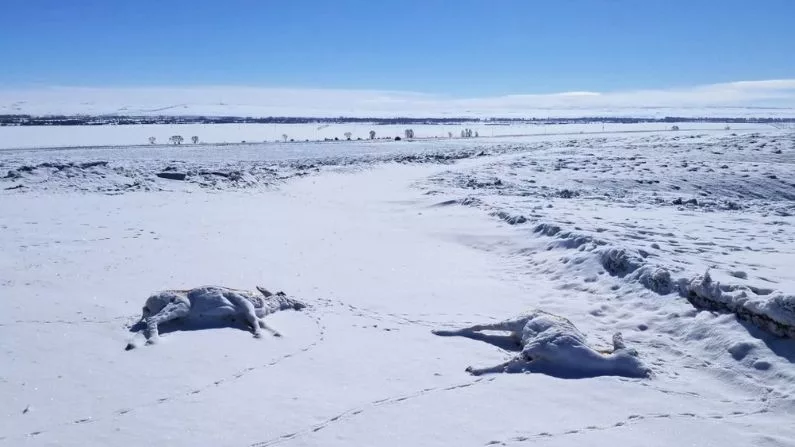Wyoming’s Gov. Mark Gordon came to Pinedale late last week for an emergency meeting to discuss the state of big game. The consensus is the animals are suffering drastically.
It was a full house, with dozens of people also on Zoom.
“The fact of the matter is you all know that we’ve seen tremendous losses in wildlife this winter,” Gordon said. “It’s been the toughest winter in a very long time, and I think it’s particularly difficult because we’ve had several several years now where winters have not been that tough.”
Threats to herds
Gordon was joined by Wyoming Game and Fish Director Brian Nesvick and Kevin Monteith, a professor at the University of Wyoming’s Haub School of Environment and Natural Resources.
This winter the Pinedale area had nearly double the amount of days below zero compared to average — and with above average snowpack. Also, a rare form of bacterial pneumonia is spreading through local antelope herds, so far killing more than 200 of them. Due to this, Nesvick reported grim numbers for local herds.
“What we’ve seen, basically from Pinedale to Rock Springs is about 50 percent of adult mortality on pronghorn, and about 30 percent adult mortality on deer and almost all of the fawns are gone — about 90 percent or even a little bit more than that,” Nesvick said.
The last time mule deer fawn populations took such a significant hit was in the winter of 2016-2017. Mule deer populations have generally been declining in the state since the 90s, and the game and fish department is currently studying the declines and working to restore populations.
No clear solution
Many residents spoke out about how antelope and mule deer populations will fare after this winter of harsh conditions, disease and resulting deaths.
“We believe something drastic needs to happen, given the fact that we’ve got some pretty drastic challenges out there,” Pinedale resident Paul Ulrich said. “We love to hunt. That’s what we do all fall, and for Wyoming’s wildlife population, if it means us taking a year or two off, it is the right thing to do.”
And while the game and fish department said the agency is open to that idea, it might not be the most effective. The agency said fawns are what keep mule deer populations healthy, and not that many female deer are hunted in the state.
Another suggestion from residents was emergency feeding, but officials said antelope and deer cannot digest hay and other supplemental feed very well.
Gordon will hold a second meeting in Rawlins at the Jeffrey Community Center and on Zoom on Tuesday, April 4, at 4 p.m.






